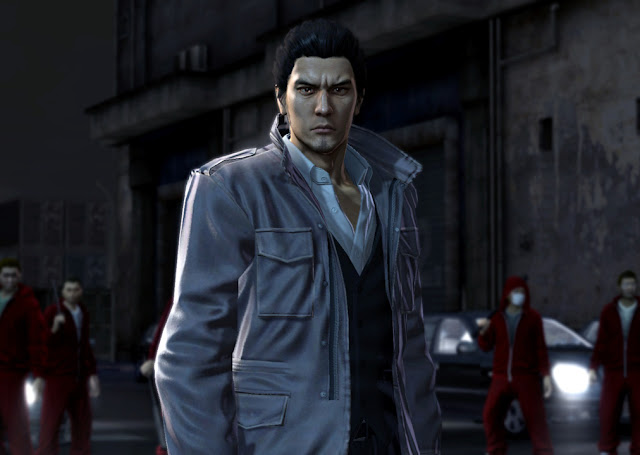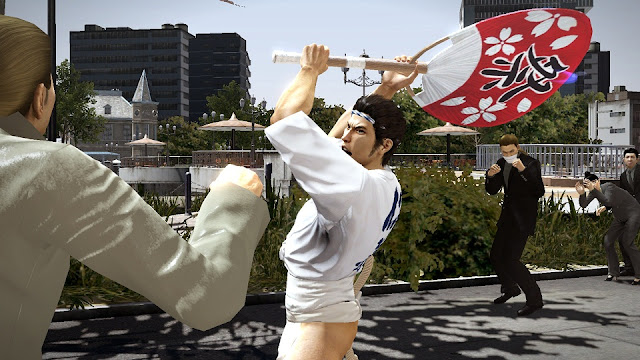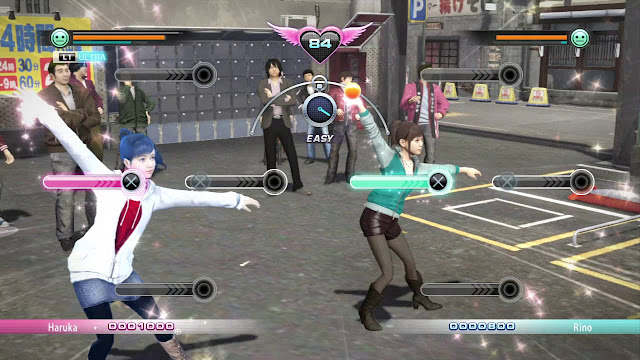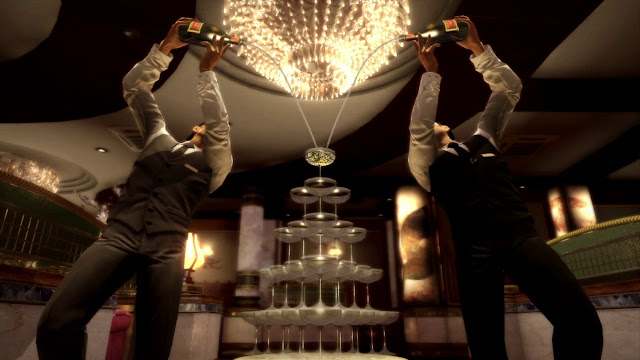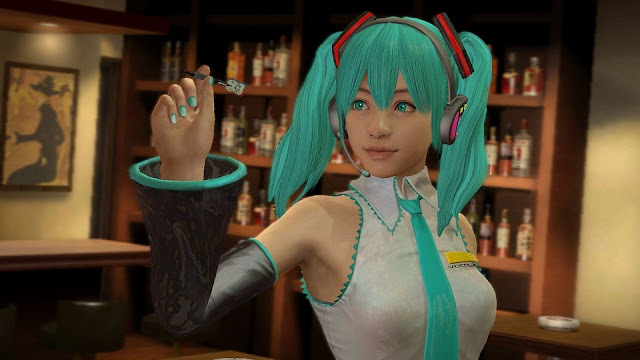It is difficult for me to play the Yakuza games. Not because I don’t like them – quite the opposite – but rather because, every time I do play one of the Yakuza titles, I wind up feeling very homesick for Japan.
Related reading: Why Don’t You Play In Hell, by Sion Sono, is an essential film for anyone interested in yakuza-based entertainment. It’s weird though.
Though I have never had anything to do with the actual yakuza in Japan (so stay away, feds), to me, the explicit narrative in the Yakuza series has never been its highlight. Rather, it’s the game locations themselves that I find so appealing. Based heavily on real Japanese urban playgrounds, it’s the authenticity of the environment design that makes it so easy to get lost within one of these games. From the warm glow of the neon lights at night, to the friendly convenience store music that is blasted through speakers into the streets, the Yakuza games have a pinpoint accuracy on the unique aesthetics and soundscapes that make Japanese cities such fascinating environments to live in and explore.
And much of Yakuza 5 – as with its predecessors – is focused on the mundane side of simply living within these cities. Sidequests involve visiting bars, hostess clubs and restaurants. In the first chapter of the game the series leading man, Kiryu, has retired (temporarily, as it turns out) as a yakuza clan leader, and you’re encouraged to spend a great deal of time participating in his post-gangster life job: driving a taxi, which involves picking up passengers, having a conversation with them while driving them to their destination, and following the road rules. Yes, that’s right, you’ll need to accelerate slowly, stop at red lights, and wait for pedestrians to cross the road. It couldn’t be further from the taxi missions in a GTA title. Then, for some downtime it’s possible to jump into an arcade and play a skill tester or popular game, or head on down to a local river for a spot of fishing or to take on a local in a game of Shogi (Japanese chess).
Each chapter of the game gives you control of a different character, and it’s quite easy to spend hours simply wandering around and finding things to do that have little to nothing to do with the main narrative. But unlike most other modern open world games, Yakuza 5 does it without feeling artificial or contrived. Everything that you can do in the game is, essentially, something that could happen in a real Japanese city, so unlike say, Assassin’s Creed titles, the world isn’t filled with icons of things to collect for the sake of collecting, or sub-missions arbitrarily placed to push the overall play time out.
The cities are more self-contained, too, with the explorable area limited to a couple of blocks, rather than the ridiculous sprawl we see in the likes of Watch Dogs or Just Cause 3. This, too, is for the best, as the focus on a smaller area allows the developers to build in a greater level of detail and accuracy, which directly generates the authenticity that I mentioned earlier. There are no “dead zones” in Yakuza 5’s environments, and so the game spaces positively team with activity.
This is the thinking person’s open world game, with a greater emphasis on character development (it is an action JRPG rather than a GTA clone, after all), and a greater subtlety running through its design that demands players take their time to really soak in what is going on around them so they can appreciate the little things. What is absent is the bombastic action, gunplay, over-the-top car chases and explosions of open world games developed in the west, and while for some this will mean Yakuza 5 feels sedate, for others it’s going to be a more powerfully engaging world that better mirrors something you’d actually want to live in.
While the city and environment design are tight and focused, the main narrative of Yakuza 5 sprawls like something you’ve never seen before. As I mentioned previously, each section of the game is broken up into a number of distinct chapters, each led by a different character, and each slowly – almost painfully slowly – contributes to a story about the labyrinthine politics of the Japanese underground. It takes a very solid week or two of playing for all the threads to start to pull together, as betrayals, double crossings and major and minor character move into and out of the picture. If George R. R. Martin was writing a book about the yakuza (Game of Thrones: Land of the Rising Sun, perhaps), this is perhaps what you would be looking at.
As a westerner with reasonable understanding of the common view of the yakuza from the time I’ve spent in Japan, but without any first hand experience with or academic study into the organisations, the Japanese gangster world is one both fascinating and foreign. As crime syndicates go, the real-world yakuza are not so bad. Sure, they deal in prostitution, drugs, and are violent criminals, but they behave according to a code of honour that is a unique quirk of the Japanese culture, and grants them a degree of respect and tolerance from both the common person, and the police themselves. They don’t tolerate doing harm to “civilians” as part of their inter-gang intrigues, for example, and from the police’s perspective, it’s better engaging with the yakuza than trying to take them down and leave a power vacuum in the underground world that would likely be filled with something far worse. The strict laws and order that the yakuza to their work within, oddly enough, means that they are the lesser of evils, and at times a genuinely useful force within the Japanese community, such as back in 2011 when the yakuza mustered their resources to be part of the relief and aid efforts after the earthquake and tsunami hit.
And that’s why, in Yakuza 5, you’ll need to beat up on thugs and other yakuza gangs, engage in street races, and perform a whole bunch of other illegal activities, but the police won’t try and chase you down for it. There’s no escalating “star system” that most other open world crime-based games have that represents the amount of resources that the police are dedicating to taking your character down. But that’s also why you won’t be stealing cars and you can’t walk up to a random stranger and beat them bloody to take their cash; the game forces on you the yakuza code of honour, and it’s actually the better game for it, because it means the gameplay better marries up with the narrative.
But that’s not to say it won’t get violent. Oh no. Yakuza 5 knows how to be very violent, and what’s amazing is that it keeps finding creative new ways to be violent. For example, Kiryu’s got a move where he’ll grind a poor sod’s face on the concrete of a road while blood pours out. I like that one. I used it a lot. Each of the other characters has their own move set, distinct from one another, and they way they go about beating their opponents into a gory mess differs greatly as well.
The mechanics behind the combat are quite simple – as each character levels up they get access to a handful of “points” that can be spent unlocking new moves and upgrading their physical capabilities. In combat itself Yakuza behaves more like a brawler than a traditional JRPG, being fluid and heavily action based. This might be outside the skillset of the most hardcore JRPG purist, but it’s rarely frustrating enough to actually make progress difficult. When Yakuza surrounds your character with dozens of enemies at once, which is likes to do in a couple of key set pieces, it can be difficult to weave through the mess and actually get attacks in without an enemy strike breaking you (which then results in a pile-on from all direction), and there are extended sequences where you’ll be making your way through a building and dealing with waves of enemies that can become protracted enough that it’s physically tiring by the time you get to the boss-character, who often has far too much health, but all of this is manageable.
There’s also the ability to turn just about everything in the environment – from street signs to bicycles – into weapons, as well as the ability to acquire proper weapons, from swords to guns. Each weapon belongs to its own “type”, and as you use that type more, it will level up and your character will get more proficient with it. Finally, there’s bits of equipment that can help you to upgrade your character according to play style. These are minor additions to what is, again, a simple action JRPG/ brawler system, but they help to keep it interesting, and I never got bored with bumping into goons on the street (random encounters). Which is just as well, because those were frequent.
What I liked most about the system, however, was the way that it kept “resetting” your progress. Each new character started out effectively from scratch, and so, while the narrative flowed from one character to the next, the actual experience was more akin to a series of “short” JRPGs stacked into a compilation. I put “short” in inverted commas because each chapter is, by the time you work through some of the side quests and accept the game’s invitation to simply ‘live’ within the city, not really short at all. The overall clock will easily, effortlessly, exceed 100 hours if you find yourself even remotely invested beyond the base narrative.
The attention to detail from the team at SEGA flows through to the side-distraction mechanics, too, with every minigame being as crisp and playable as the main quest. No doubt you’ve played open world games or JRPGs with side distractions that simply don’t work well, but in Yakuza 5, one minute you’ll be hooning around in a street race, and the next you’ll be downing 100yen virtual coins in the arcade like there’s no tomorrow.
SEGA also uses these side quests to provide levity – if not outright surrealist humour – to break up the main narrative which, again, is both quite serious in tone and incredibly violent. Moments after breaking the face of a bunch of street thugs, you will be driving a taxi carefully around the streets, while answering an impatient customer’s questions to keep him happy. Your hulking yakuza powerhouse can spend a small fortune trying to win a Hatsune Miku figurine from a skill tester (well, mine certainly did). There are fascinatingly delightful and weird characters that populate these cities that you really need to explore around to find.
More than anything else, though, what I loved so much about Yakuza 5 is just how effective it was in offering a vision of Japan’s red light districts. As playgrounds for the adults, the wealthy, and the risk takers, they are full of excitement and a little bit of danger, and so filled with exotic sights and sounds that I could almost smell the food vendors or rain on the asphalt after a storm; that’s how effective this game is at bringing me back to Japan for just a little while.
– Matt S.
Editor-in-Chief

